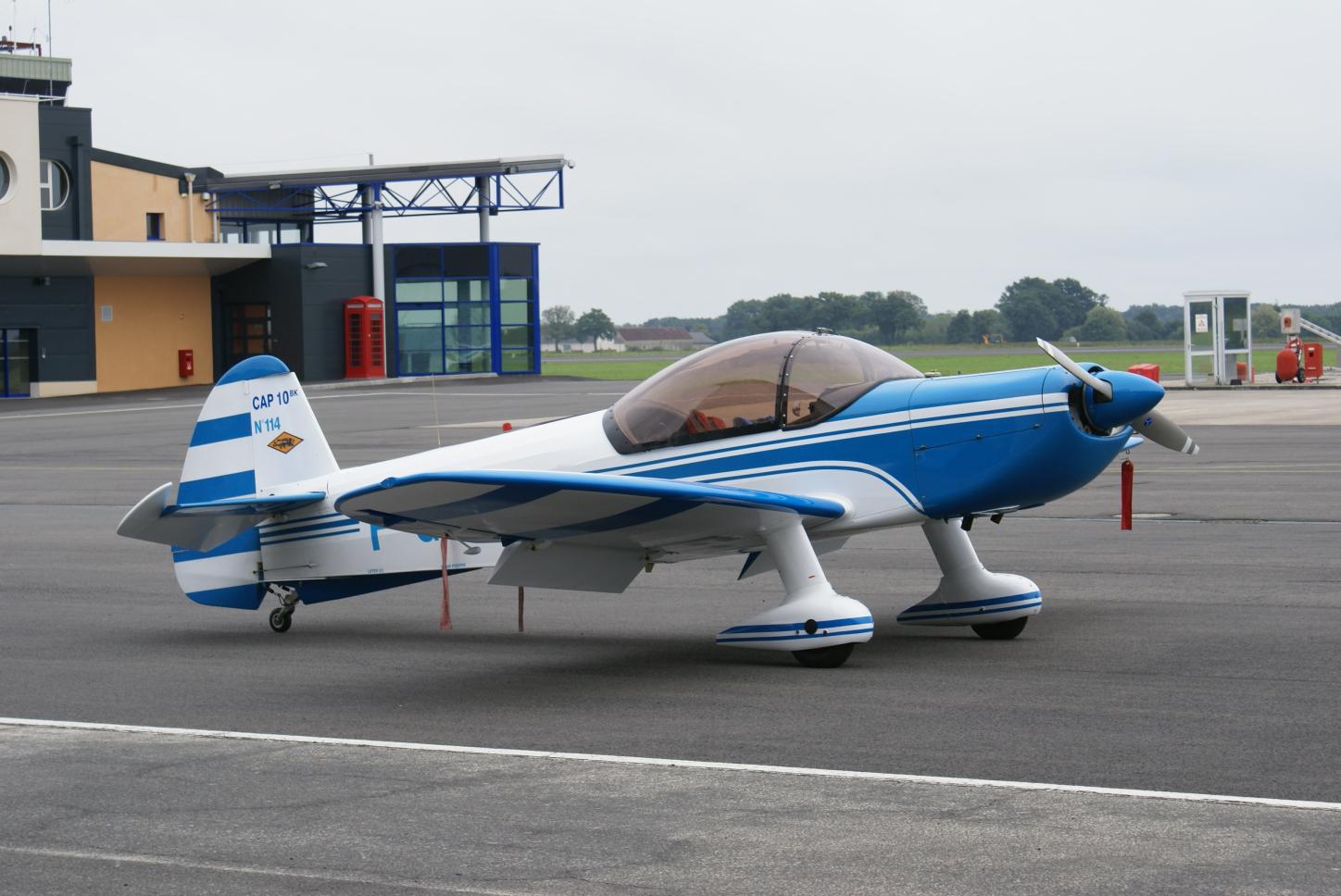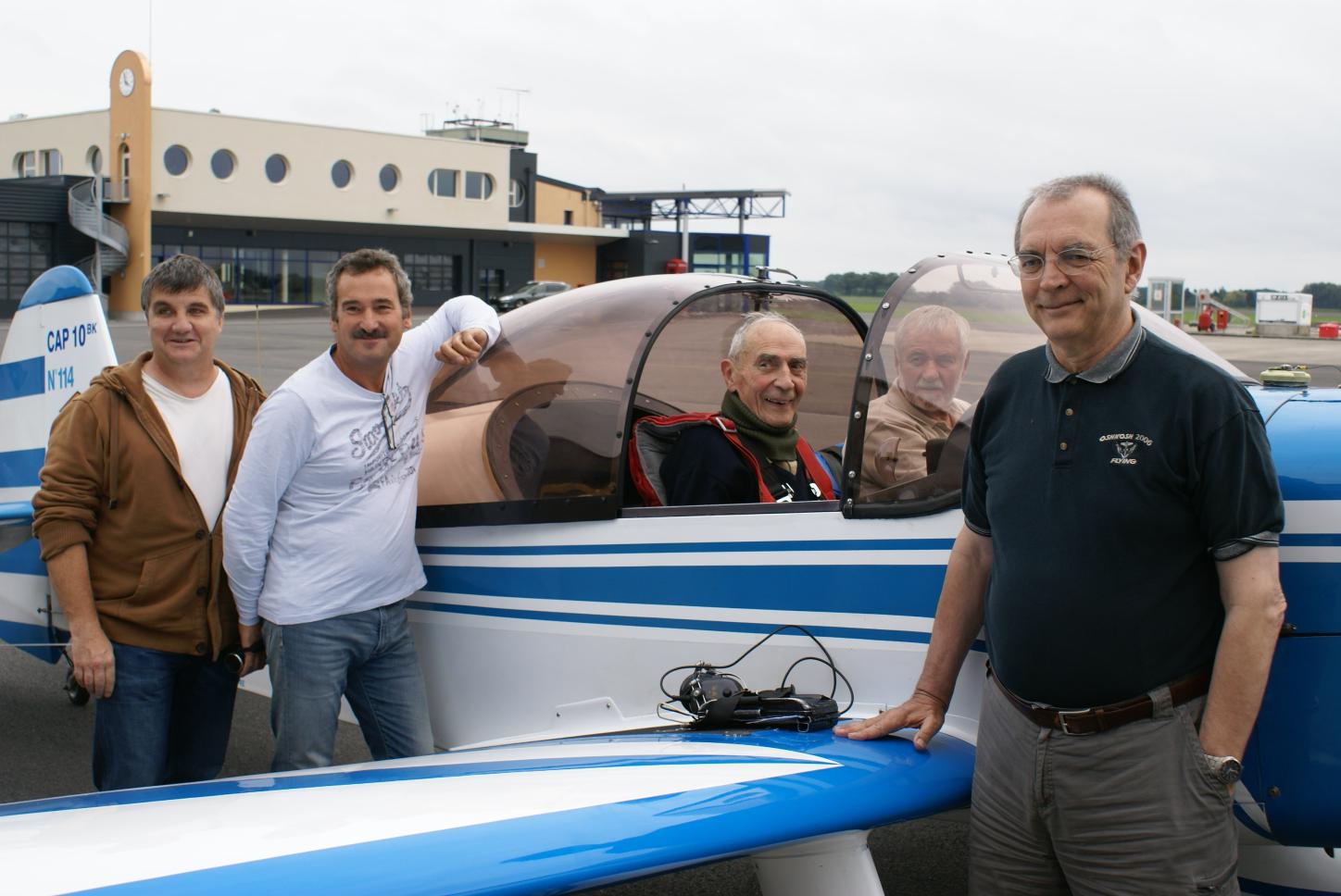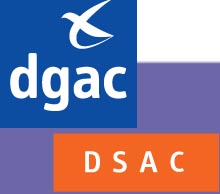
CAP10BK - Carbon Fiber Spar Reinforcement

Story of the new spar reinforcement for the CAP10 by Jean-Marie Klinka,
retired engineer, designer of the CAP232, retired from the DGAC (French FAA),
who worked on the reinforcement design and certification for one year
DynAero is now retired from CAP TC. Recently there is no CAP TC
holder.
I have joined Air Menuiserie* and we have designed our own carbon
First flight of the new wing will be soon [done 10/1/13]
There is no change to CAP10B design, except the internal carbon.
There are no links between CAP10C and our CAP10B/carbon (different technology)
10/1/2013
Tuesday afternoon. Grey sky. No wind. 4000ft ceiling. Good flight.
Laurent Hard and Denis Ruffray, from Air Menuiserie Company,
Jean-Marie Saget, Aero-Club Dassault, owner of this Cap, Chief test
Bernard Poussin, mechanic manager, assembled the wing and the
Jean-Marie Klinka
Regarding the article in Info-Pilote about the Cap 10 BK with Jean-Marie KIinka,
it basically goes thru the history of the spar. Initially, the "B" model
(first model) had a wooden spar which would suffer very small cracks when overloading
the plane. The "C" version that came up in the 90's was supposed to fix the problem,
but it didn't really, and the way the plane would handle, especially inverted,
was not up to par with the original ("B") version. So that left a lot of pilots
unsatisfied, along with the fact that the flight envelope had been restricted to
+4.4 / -1.8g by the authorities, so not much aerobatic capability anymore. Recently, Jean-Marie went back to his archives and dug out the solution he'd
found for a French glider, the "Bijave", in 1972 (when he was working with Montaine).
At the time, this wooden glider was
in use a lot in France, and some old spars were breaking up. Avions Mudry's solution
repaired and saved 250 gliders with a glass fiber repair procedure. For the Cap 10,
it meant they put carbon reinforcement
strips over the whole length of the spar, on top and at the bottom. The spar
repaired with this procedure is
stronger than the original "B" version, as per tests conducted in "CRITT de Rochefort"
(cf picture). The original flight envelope (+6 / -4.5g) has been reinstated. It could
be expanded further, but it does not make sense financially. Very important as well is
that this "BK" version handles the way the original "B" version does. The "K" in "BK"
stands for "Klinka" of course. They expect about 50 planes to be modified.
Wait and see. CAP orphan?
reinforcement (11 months, 200-page report, full wing static test).
EASA [European Aviation Safety Agency (FAA)]
approved this reinforcement last month.
with Jean-Marie Saget, retired Dassault chief test pilot (Mirage, Falcon),
aerobatics instructor, chief of the reinforcement project.
No change to flight domain (+6 g -4.5 g restored).
or between DynAero and Air Menuiserie. The most amount of
work is woodwork. This repair will be included in the approved Air
Menuiserie SRM (Structural Repair Manual).
The chief (JMS) is happy: "It's a CAP10".
* "Air Carpentry/Woodworks"
www.air-menuiserie.com
(Click here for English version of website)

Left to Right:
EASA Design Organization Approved, two woodworkers, survivors of
Avions Mudry Company. They knew Daniel and Montaine well.
They applied the carbon repair to the wing.
Pilot (retired) of all military Dassault aircraft since 1950,
always aerobatic instructor.
His flight report after the flight: "It's a CAP10"
fuselage (Maintenance Activity)
The Spar
Static Test - Equilibrium
.jpg)
At 12 g (safety coefficient = 2), just before the break.
(Well above the minimum required by FAR23: safety coefficient = 1.5)
After the static test, broken at 12.6 g (safety coefficient = 2.1)
(limit cap 10 in flight: 6 g, so the safety coefficient is now 2) but
the strain gauges indicated a very low level of constraint in the
carbon fiber, which is very good for the fatigue
![]() Magazine Article
Magazine Article
 English version of DGAC Recommendation Bulletin
English version of DGAC Recommendation Bulletin
TRIPALE Magazine Décembre 2014 par tmtv-fr
 Home
Home